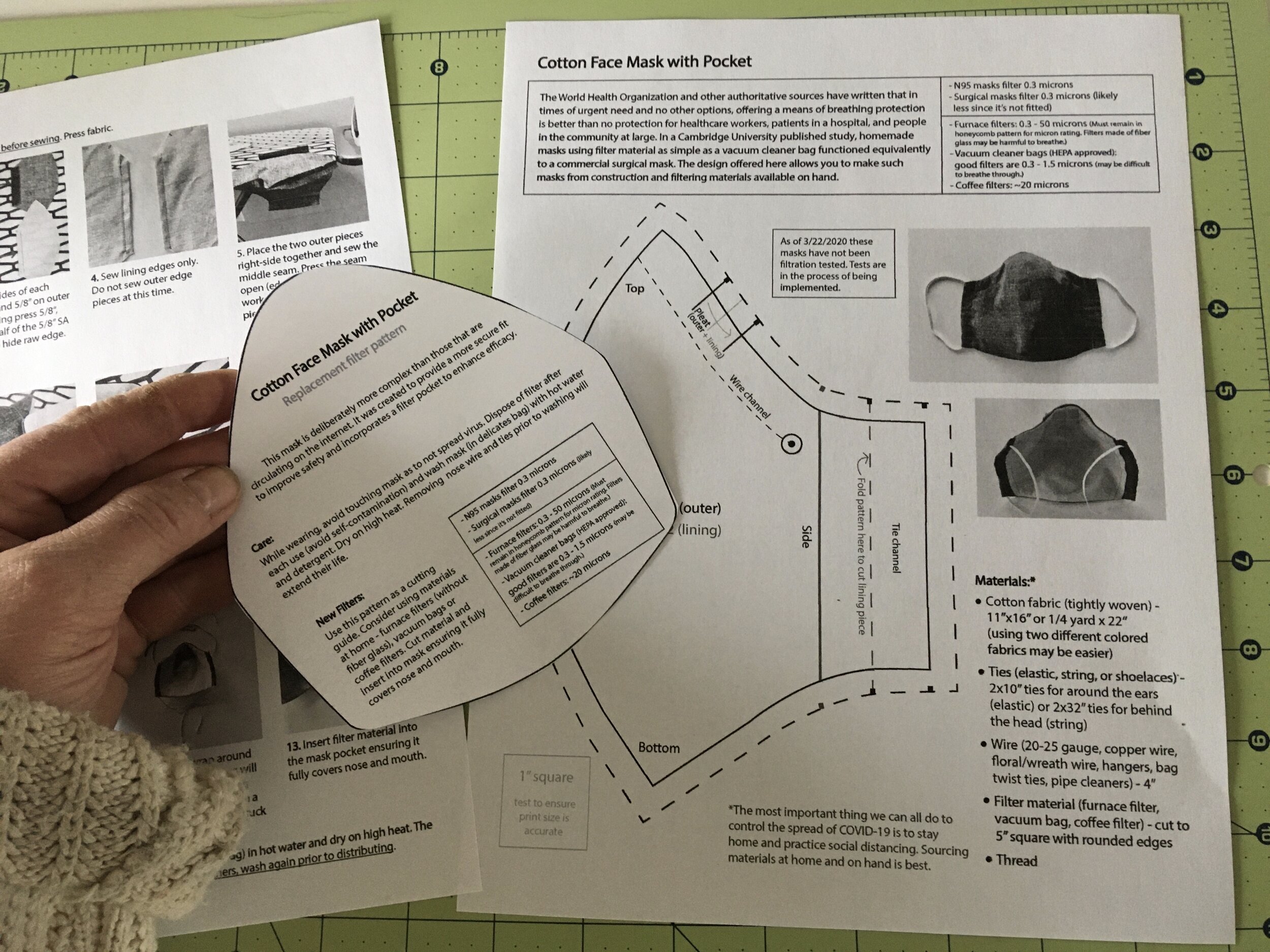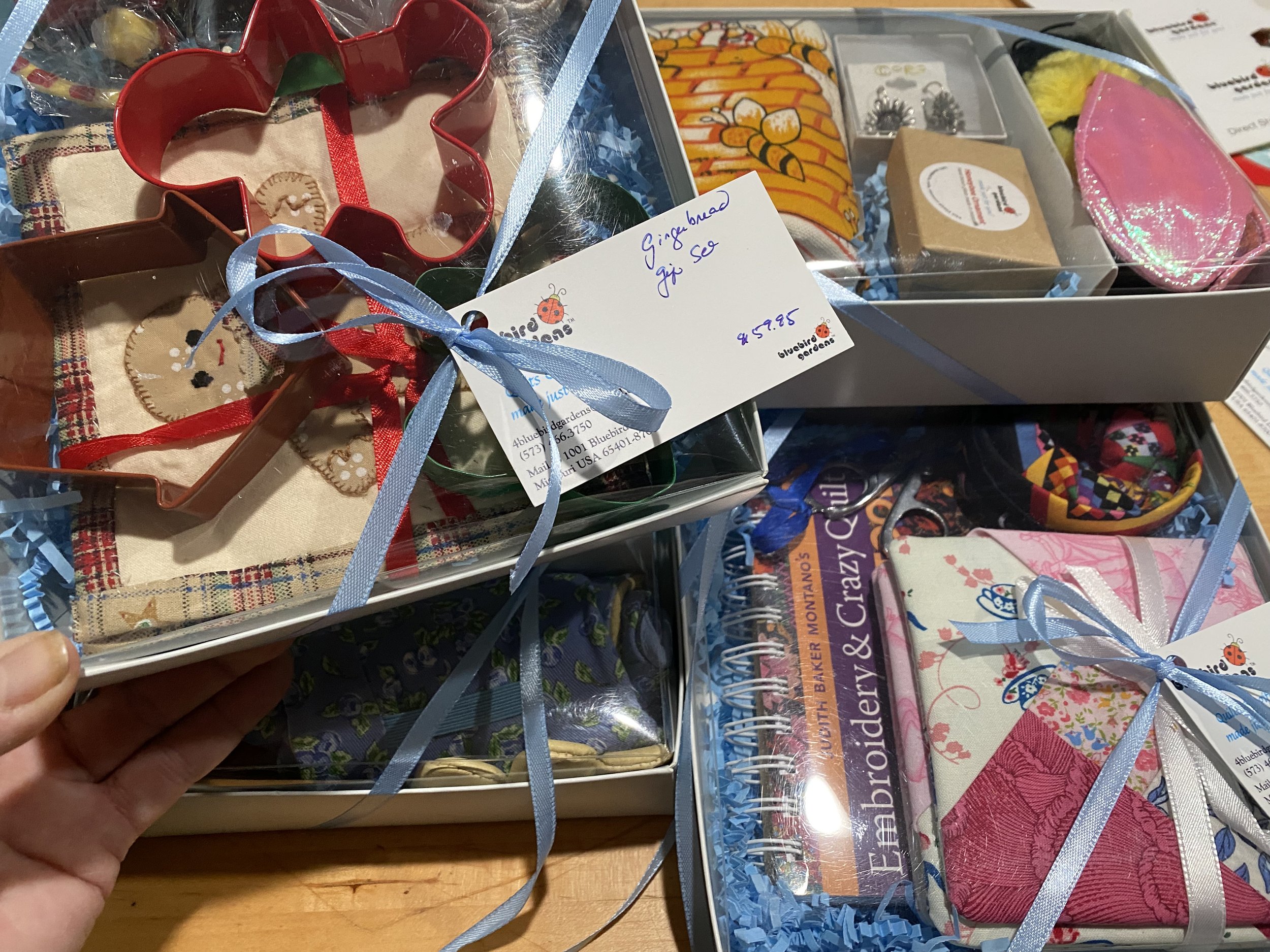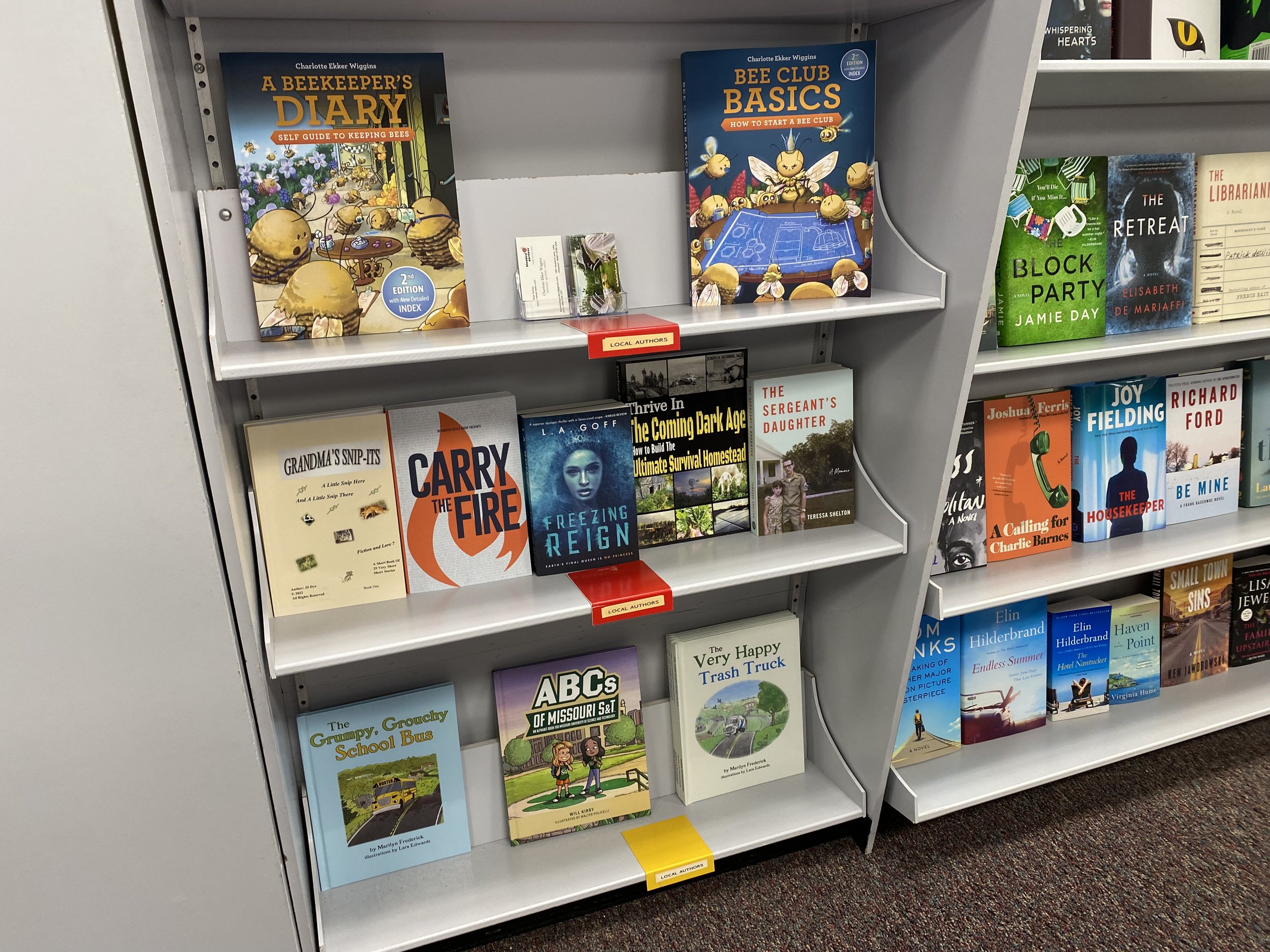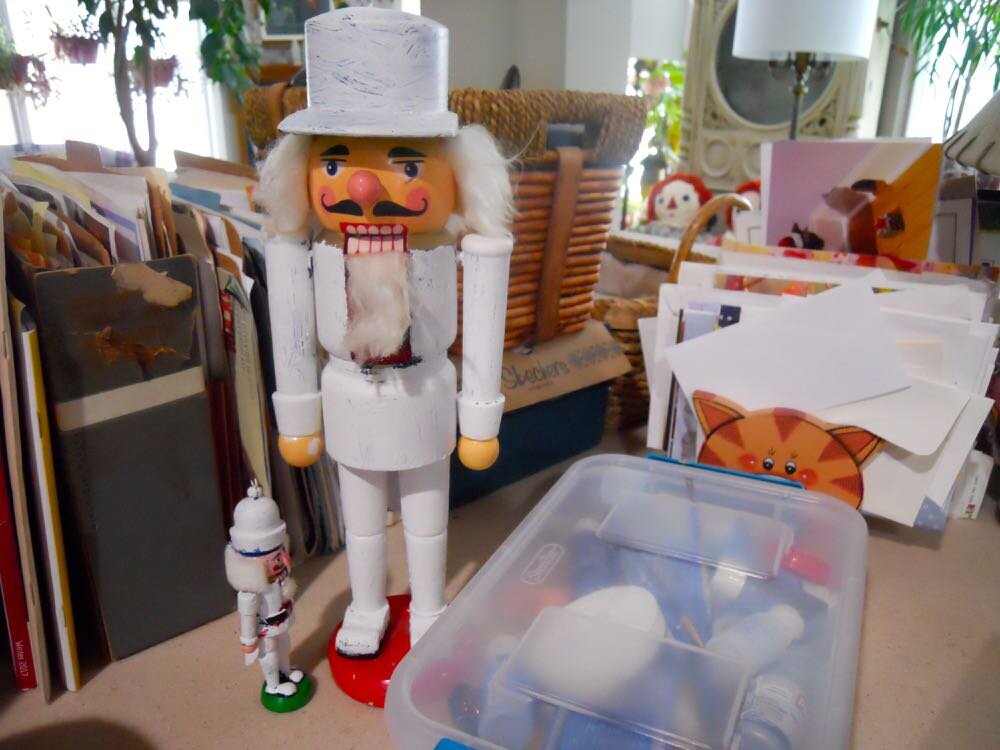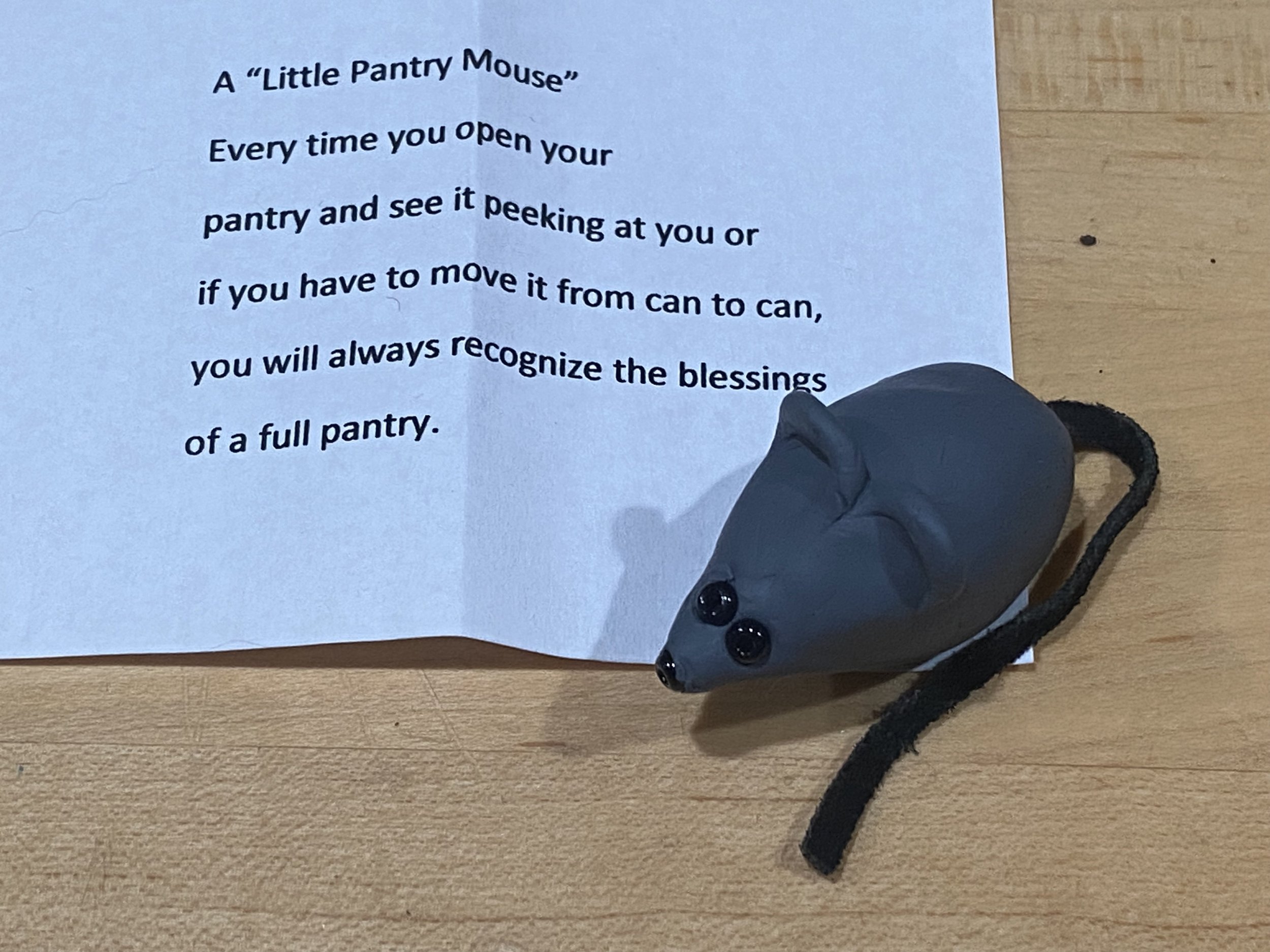Homemade Face Masks
/Reversible homemade face masks with filters. (Photo by Charlotte Ekker Wiggins)
Homemade Face Masks
The Centers for Disease Control and Prevention now recommends wearing basically a face mask when coming in contact with others when, for example, grocery shopping.. With predictions that COVID 19 will peak in Missouri mid May, I decided to make a few face masks.
There are a lot of patterns making the rounds, from red bandanas with hair ties to ones with replaceable filters. I decided to tackle a reversible, reusable one with replaceable filters and here it is.
To make, I washed purple quilter’s cotton in hot water to shrink the cotton fibers. Quilter’s cotton is one of the best cottons to use because the fibers are tighter. Once washed, I dried in a hot dryer, again to tighten the cotton threads, and then ironed it.
For the adjustable nose pieces, I used the small gauge wire I had in my goodies drawer for house projects.
The 1/4 inch elastic was in my sewing supplies.
I did buy the Dupont 9600 furnace filter and Tool Box Shop towels, both recommended in a Business Insider article about household items tested for filtering particles. For a 20x20x1 furnace filter, I cut out 36 face mask filter replacements. Be careful as you remove the filter; I would cut it out of the cardboard frame instead of trying to tear it out. I ripped a corner before I took scissors to it.
Also use a piece of cotton when trying to iron out the furnace filter or you won’t be able to flatten the filter without burning it.
Iron out furnace filters by placing cotton on the filter. (Photo by Charlotte Ekker Wigigns)
The Tool Box shop towels come in rolls and can easily be cut from the rolls.
Homemade Face Mask Pattern
After doing some research, I decided to use this pattern from University of Minnesota alum Shannon Williamson. She has degrees in apparel design and medical device innovation. She works as a user experience designer with the cardiovascular group at Medtronic.
While DIY masks are not as effective as surgical or N95 masks* in preventing the spread of COVID-19, some doctors and other health care professionals are wearing them over the top of the higher-tech masks to increase durability. And use of these DIY masks, by lower risk populations, free up N95 masks for health care professionals and others who are at high risk.
Only two patterns, this is for cutting out the filters. (Photo by Charlotte Ekker Wiggins)
“This mask is deliberately more complex than those that are circulating on the Internet,” says Williamson. Her design provides a more secure fit and includes a filter pocket.
She created the design after consulting with everyone from quilters and seamstresses to physicians and engineers. But, she says, it’s important for people not to go out and get supplies in order to create these.
She recommends people use what they have on hand, from unused fabrics to cut-up furnace filters, or even vacuum cleaner bags, for the filter pockets. You will find the pattern and instructions here:
https://twin-cities.umn.edu/news-events/diy-face-masks-during-covid-19
Here’s the reversible mask I made for myself, it’s purple for Easter. (Photo by Charlotte Ekker Wiggins)
Additional Notes
After washing and drying fabric in hot water and hot heat, iron it. All of that heat will make the fabric fibers tighter.
Once you sew the curve edges together, make little cuts along the curve so the fabric will fold better. It’s hard to iron the seams open so this step will help you skip trying to iron the seams open.
I did try a bread tie in the first one and liked the small gauge wire better. Use the bread tie if that’s the only thing you have. Pipe cleaners and floral wire will also work.
To keep the wire in place, I added a little sewn in wing at the end of where the wire ends to make sure it stays in place.
If you are not sure of head size, make fabric ties instead of using elastic. The ties will provide the wearer more flexibility and be more comfortable for long wear.
The furnace filters are easier to insert than the Tool Box Shop towels. Both are easy to breathe through and have been confirmed as filtering a high percentage of virus particles.
Mask liners made from furnace filters and shop vac towels. (Photo by Charlotte Ekker Wiggins)
The homemade face masks do look a bit like a bra cup. These masks don’t sit flat on your face, they stand out to allow you room to breathe without getting fabric in your mouth on the intake. At one point I was tempted to make one out of yellow like a duck bill, then came back to my senses.
Don’t forget to make a few extras to share with family. (Photo by Charlotte Ekker Wiggins)
You are wondering, though, why purple?
I actually made two different colors. No, make that three. One set was made out of yellow bee fabric, another one was made out of pink fabric for a friend, and then there are these purple ones. Reversible with a solid purple on the other side.
It’s Easter. Purple seems to be a good compromise, not too pastel but still a nod to the season.
Happy Easter and stay well!
Charlotte



